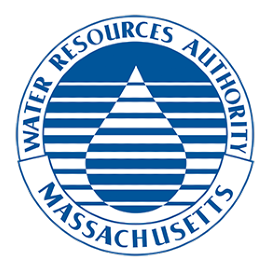The MWRA's Industrial, Commercial and Institutional (ICI) Water Management Program was developed to help businesses, industries and institutions improve their water efficiency, thereby reducing operational costs.
Through the development of water efficiency measures, all facilities have the potential to evaluate opportunities for water savings without adversely affecting operations. Water saving measures need not be expensive nor complex to be effective. During the early 1990s, the ICI program aided hospitals ranging from 130 bed capacity to over 500 beds, with annual water consumption from 15 million gallons to 145 million gallons. Each hospital study conducted has shown at least one area of each facility where significant reductions in water usage can be achieved.
This report has been developed based on lessons learned from previously conducted, sector-specific water use surveys. Listed below are some suggestions and examples of water efficiency measures for hospitals that have proven successful or have potential applications in area facilities examined. Water and sewer rates, as well as cost/savings payback, are based on 1993 figures for all examples. For context, water costs in 2020 are approximately 5.7 times the 1993 rate.
Important Note: When a water efficiency measure is considered in a health care facility all regulatory agencies and local code requirements must be followed. Be aware that 360 CMR 10.000 (PDF) (MWRA Sewer Use Regulations - PDF) prohibits the discharge of once-through cooling water to the MWRA sewer system.
Sanitary
- Install flow control fixtures on all faucets.
- Install water saving shower heads.
- Retrofit flushometer toilets and urinals with low consumption valve replacement kits.
- Replace existing higher consumption toilets and urinals with Massachusetts Plumbing Code conforming low flow toilets and urinals which use 1.6 gallons per flush (gpf) and 1.0 gpf or less, respectively.
Heating and Cooling
- Avoid excessive cooling tower blowdown by minimizing consumption with automatic controls and conductivity meters.
- Ensure return of steam condensate to boiler for reuse.
- Replace water-cooled equipment with air-cooled units where possible and economically feasible.
- Modify once-through water-cooled refrigeration and air conditioning units and incorporate into recirculating cooling loop.
Hospital Operations and Equipment
- Use full loads in sanitizers, sterilizers and lab equipment dishwashers.
- Eliminate use of city water for cooling sterilizer condensate before dumping to drain when possible, considering drain material and diversity of drains or available floor space for holding tanks.
- Reduce flow to surgical vacuum pumps to acceptable minimum level and maintain proper operation.
- Install automatic valves on X-ray film processing equipment to stop water flow when units are not in use.
Cafeteria & Food Service
- Operate dishwashers with full loads only, and shut off when they are not in use.
- Control flow of water to garbage disposer or consider eliminating the use of the disposer all together.
- Investigate reusing rinse water from dishwasher for garbage disposer or for pre wash cycle.
- Install spray rinses for pot washing and reduce flow of spray rinsers for pre wash.
Laundry
- Evaluate wash program considering daily wash loads. Consult manufacturer for specifications regarding minimizing water necessary for various load soil conditions.
- Check with chemical vendor and evaluate wash formula.
- Investigate a rinsewater reclamation system to reuse rinsewater for wash cycle.
- Consider installing a wash water and rinse water treatment and reclamation system.
Building Maintenance
- Read water meters daily if your facility uses more than 7.5 million gallons of water per year.
- Locate and repair leaks.
- Check steam traps periodically, repair when necessary.
General
- Initiate employee awareness program, get input and ideas from staff, offer incentives. Encourage employee water conservation at home as well.
- Evaluate daily routines of staff (i.e. patient showering, clean up, scrubbing and hand washing) and encourage efficient practices and procedures regarding water use.
- Develop a water management plan at your facility
